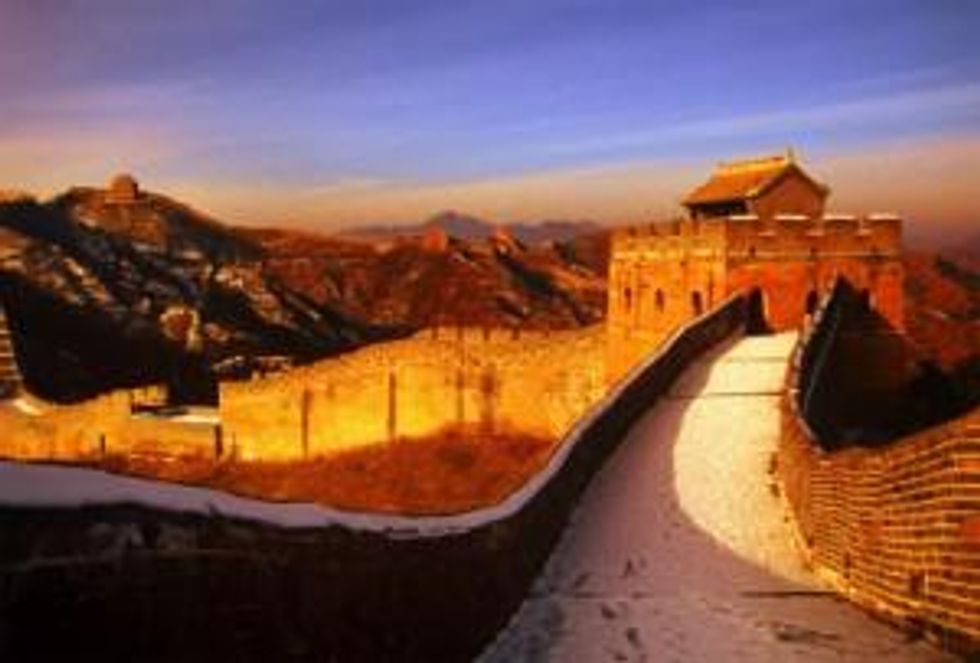- WORLD EDITIONAustraliaNorth AmericaWorld
Investing News NetworkYour trusted source for investing success
- Lithium Outlook
- Oil and Gas Outlook
- Gold Outlook Report
- Uranium Outlook
- Rare Earths Outlook
- All Outlook Reports
- Top Generative AI Stocks
- Top EV Stocks
- Biggest AI Companies
- Biggest Blockchain Stocks
- Biggest Cryptocurrency-mining Stocks
- Biggest Cybersecurity Companies
- Biggest Robotics Companies
- Biggest Social Media Companies
- Biggest Technology ETFs
- Artificial Intellgience ETFs
- Robotics ETFs
- Canadian Cryptocurrency ETFs
- Artificial Intelligence Outlook
- EV Outlook
- Cleantech Outlook
- Crypto Outlook
- Tech Outlook
- All Market Outlook Reports
- Cannabis Weekly Round-Up
- Top Alzheimer's Treatment Stocks
- Top Biotech Stocks
- Top Plant-based Food Stocks
- Biggest Cannabis Stocks
- Biggest Pharma Stocks
- Longevity Stocks to Watch
- Psychedelics Stocks to Watch
- Top Cobalt Stocks
- Small Biotech ETFs to Watch
- Top Life Science ETFs
- Biggest Pharmaceutical ETFs
- Life Science Outlook
- Biotech Outlook
- Cannabis Outlook
- Pharma Outlook
- Psychedelics Outlook
- All Market Outlook Reports
Prices, Quotas and Smugglers: Making Sense of Rare Earths in China
China is the dominant player in the rare earths game, yet the country’s impacts on the market are not easy to understand. Here we provide an explanation of what China’s rare earths quotas really mean.
A quota in name only
But, it is also a fact that Chinese REE export quotas have become meaningless, because the country has been exporting far less than its quota. In 2012, for example, the export quota was 30,996 tones, but the country only exported 13,000 tonnes, about 40 percent of the allowed export. 2012 was also the year that China eased restrictions on REE export quotas for the first time since 2005, in an apparent nod to its key customers, Japan, Europe and the US, which complained to the World Trade Organization that export restrictions were artificially inflating REE prices and in the process, benefitting Chinese producers at the expense of rare earth consumers.
So, the rare earth market has been in the curious situation of higher export quotas from China, but China not actually meeting those quotas.
Exports rise
Rare Earth Investing News reported earlier this year that Chinese rare earth exports have shown a marked uptrend in the first four months of 2013, underpinned by strong demand from Japan which took advantage of lower prices to buy. While Chinese exports plummeted 71 percent in 2012 compared to 2011 – a record year for REE prices – they were six times greater in April compared to April 2012, and 28 percent higher in March. The trend continued in July, REIN reported, with July exports up 10.4 percent from June. For the first seven months of the year, exports were at 11,185 tonnes. Recall that they totalled 13,000 tonnes for the whole year last year, so exports this year are bound to surpass the 2012 total.
What does this mean? It means that even with the higher export volumes, China is still nowhere near reaching the export quota, which this year is set at 31,000 tonnes. If China is exporting less than its quota, shouldn’t this be good for REE prices? Theoretically, yes, but it’s a tad more complicated.
Enter the smugglers
In fact a vast amount of rare earths have been smuggled out of China illegally, adding to a supply glut which, combined with sluggish global growth, has depressed prices of most rare earth oxides to a fraction of their 2011 levels. China’s Vice Minister of Industry, Su Bo, reportedly said in May that a black market in rare earths has traded some 40,000 tonnes of rare earths in previous years.
To combat this problem, China in 2010 launched a campaign to root out the smugglers and put a dent in the illegal extraction and selling of rare earths. This campaign has been ramping up, and it has had a significant effect on rare earth prices. As an example, a metric ton of europium oxide that sold for about RMB 3,200 in June, is now being offered in China for RMB 4,800 to RMB 5,100/kg., according to data from Metal-Pages. Dysprosium oxide is now selling at RMB 2,300 to 2,400 a kilogram, double the RMB 1,200-1,300 range being offered in June. So, the evidence shows that what really impacts prices is not so much export quotas, but Chinese supply; recent shutdowns of illegal rare earth mines in China have had a buoyant effect on the prices of rare earth oxides. It’s a fact not lost on former Molycorp (NYSE:MCP) CEO Mark Smith, who told The Wall Street Journal last year, “We think the real story is [Chinese] production quotas, not export quotas.”
Looking out for #1
On Friday the Chinese government released its production quota for 2013, leaving it essentially unchanged from 2011, at just under 94,000 tonnes. A production quota was not published for 2012. The quotas give a signal to Chinese firms as to how much they are allowed to produce.
Indeed, much of China’s rare earth production is used domestically. Molycorp estimated that in 2011, Chinese demand absorbed 70 percent of its rare earth output, according to WSJ, and predicted, correctly, that a clampdown on local miners would cause REE production to fall.
While the extent of that production fall is not easy to quantify (Chinese figures are sparse and often unreliable), what we do know is that the crackdown has been good for REE prices, and for China’s large rare earth producers. The fortunes of non-Chinese rare earth explorers have also improved.
Bloomberg reported last week that Rising Nonferrous Metals Share Co. and Inner Mongolia Baotou Steel Rare-Earth Hi-Tech Co. led China’s rare earth stocks higher following a report the nation will curb illegal production of the metals.
As for companies outside of China that produce the rare metals, what can the market expect from them?
No foreign threats
It appears that Molycorp, operator of the largest rare earths mine outside of China, will fall short of its goal of achieving 19,050 tonnes per year plant capacity, putting to rest any concerns that Molycorp could flood the market with rare earths and drive down prices. The company produced at an annual rate of 15,000 tonnes in the second quarter, according to Bloomberg.
Lynas (ASX:LYC), the only other non-Chinese company currently producing rare earths, has also fallen short of production goals. The company sold just 117 tonnes of refined product through its recently started Malaysian processing plant in the June quarter, well short of its target of 11,000 tonnes for the year.
China still on top
What does this mean for rare earth investors? It means that for the time being, China will continue to be the dominant player in the rare earths game, despite the best efforts of Molycorp and Lynas to eat into its 90-95 percent marketshare. While this may be bad news for their shareholders, it is good news for the rare earth market, because supply is not being overwhelmed. That, in turn, is good for rare earth prices and rare earth stocks. Look for further advances in the prices of rare earth oxides as China continues its crackdown on illegal rare earth mining and internal production falls further.
Securities Disclosure: I, Andrew Topf, hold no direct investment interest in any company mentioned in this article.
Related reading:
Outlook Reports
Featured Critical Metals Stocks
Browse Companies
MARKETS
COMMODITIES
| Commodities | |||
|---|---|---|---|
| Gold | 2333.05 | +16.75 | |
| Silver | 27.37 | +0.19 | |
| Copper | 4.55 | +0.07 | |
| Oil | 83.71 | +0.90 | |
| Heating Oil | 2.57 | +0.01 | |
| Natural Gas | 1.61 | -0.04 | |
Investing News Network websites or approved third-party tools use cookies. Please refer to the cookie policy for collected data, privacy and GDPR compliance. By continuing to browse the site, you agree to our use of cookies.





